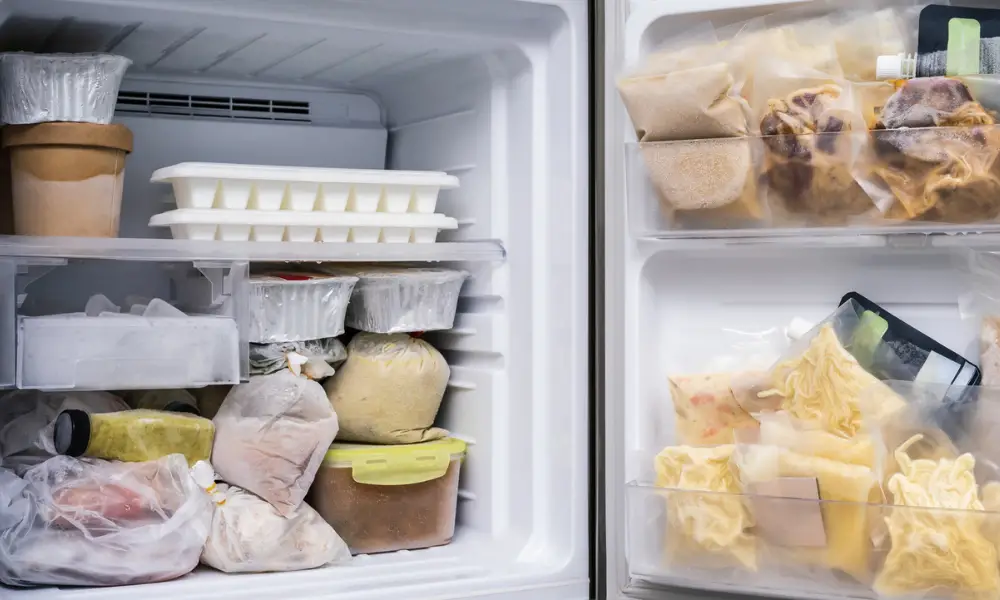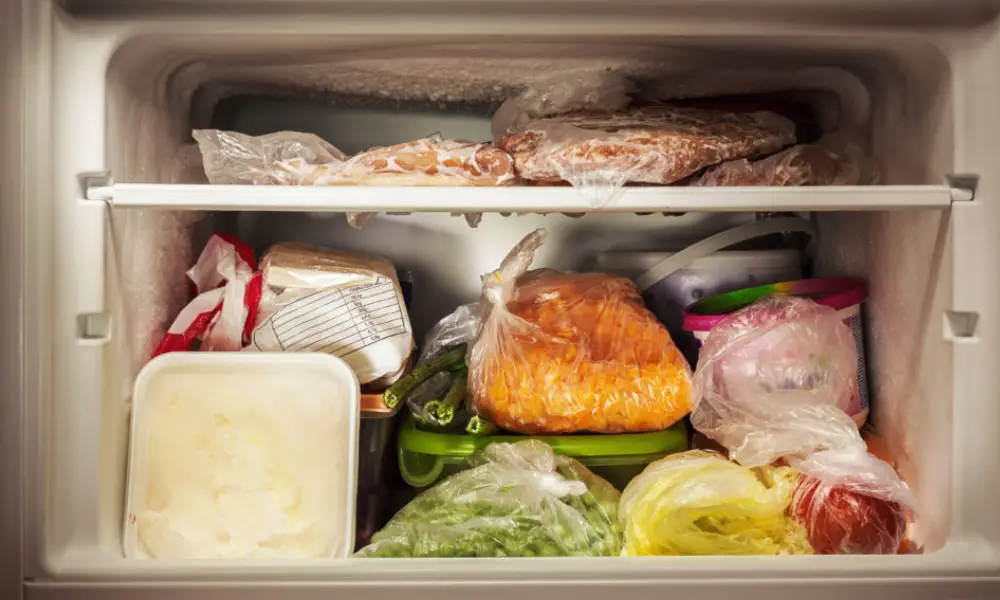Defrost is a process that is used to remove ice from a refrigerator. There are different kinds of defrosts, including automatic and manual defrost. It is important to know what type of defrost is best for your refrigerator. If unsure, you can check out our article on defrosting and ice removal.
One of the best ways to get the frost off of your fridge is to get a device with the right kind of ice-removing technology. These units can be manual or automatic. Some models even include a pan underneath. While they cost more than the manual models, you will save the time and effort of manually pulling the frozen items out of the cabinet. They are also a bit more efficient when it comes to power consumption.

What is Defrost?
Defrost is the process of clearing a frozen surface, like a freezer or refrigerator compartment, of accumulated frost or ice. This procedure, which can be carried out manually or mechanically, aids in maintaining the appliance’s effectiveness and performance and guards against food spoilage.
As the temperature drops, the air near the cooling coils condenses into water, which then crystallizes and forms an ice buildup. Defrosting, or the process of eliminating ice buildup from the refrigerator is a feature of refrigerators and freezers that helps to prevent this.
What are the Different Types of Defrost?
Defrosting comes in two primary flavors: manual and automatic.
- A manual defrost requires physically shutting off the refrigerator or freezer and using a defrosting tool, such as a plastic scraper, to remove any accumulated ice or frost. Usually, less-priced or older appliances use this technique.
- On the other hand, automatic defrost periodically melts the ice and clears the frost buildup using a heating element or a defrost timer. This defrost type is more convenient and energy-efficient than manual defrost and is often found in modern, high-end refrigerators and freezers.
- The “frost-free” defrost is a third type that circulates air while avoiding ice formation by utilizing both heating sources and fans. The most typical defrost method used in contemporary refrigerators is this one.
What are the Automatic Defrost Variations?
Further subcategorization of automatic defrost includes numerous versions, such as:
- Cycle defrost: This kind of automatic defrost system is the most basic. The frost deposit is periodically melted and removed from the freezer or refrigerator section.
- Adaptive defrost This defrost system uses sensors to track how much frost accumulates and modifies the defrost cycle as necessary. This increases the appliance’s effectiveness and promotes energy conservation.
- Smart defrost: This is a more sophisticated form of adaptive defrost, using algorithms to choose the best defrost cycle depending on the appliance’s temperature and usage patterns, among other variables.
- No-Frost defrost: This common form of automatic defrost system uses a fan to move cool air throughout the freezer to avoid the buildup of frost. Refrigerators with no frost are frequently referred to as frost-free refrigerators.
The best automatic defrost system for a given appliance will rely on several variables, including the appliance’s size and capacity, the amount of convenience desired, and energy efficiency. Each automatic defrost system has benefits and drawbacks of its own.
What is the Correct Method of Defrosting your Fridge?
The steps below should be used to defrost your refrigerator manually.
- OFFSET THE FRIENDLY: To avoid causing damage to the electrical components while the refrigerator is defrosting, unplug it or turn off the power to the appliance.
- Eliminate the food: To keep it fresh, remove it from the refrigerator and put it in a cooler or another cool place.
- The fridge door should be left open while you wait for the frost to melt. To hasten the defrosting procedure, use a plastic scraper or a soft cloth.
- Clean the interior: After the frost has melted, wipe down the inside of the refrigerator with a soft cloth or sponge and squeeze out any extra water.
- Reconnect the refrigerator’s power supply or plug it back in after the interior has dried. Before replacing the food, let the appliance cool for a while.
It’s possible that you won’t need to manually defrost your refrigerator if it has an automatic defrost system. To keep the fridge hygienic and free of any bad odors, you should regularly clean the interior.
What is the Perfect Way of Defrosting the Food?
Food can be defrosted using a variety of techniques, including:
- The method at room temperature: Place the food on a plate or the counter to defrost at room temperature. Although it takes the longest, this approach is seen to be the safest since it stops the spread of dangerous microorganisms.
- Defrost food in the microwave with this procedure. Although this procedure is quick and easy, some food portions may partially cook.
- Cold water method: Submerge the meal in cold water while it is in a sealed plastic bag. To ensure that the food defrosts fast and evenly, the water should be changed every 30 minutes.
- Bake the food in a preheated oven with a low heat setting. Although this approach takes longer than a microwave, it can handle larger pieces of meat.
It’s critical to adhere to food safety regulations when defrosting food to avoid the development of dangerous microorganisms. This includes checking the food’s internal temperature using a thermometer and ensuring it has completely defrosted before cooking. Refreeze food should never be used again.
How Long does it Take to Defrost Food?
The type of food, its size, and the method used to thaw it are all variables that affect how long it takes to defrost food.
Typically, it requires:
The defrosting process at normal temperature takes about 6 to 8 hours per pound of food.
- Microwave method: The length of time required to thaw food items varies based on the microwave’s wattage and size, but generally takes 5 to 10 minutes for small items and 20 to 40 minutes for bigger ones.
- Method using cold water: Depending on the size of the food item, this could take anywhere from 30 minutes to 2 hours.
Depending on the size of the food item and the oven temperature, the defrosting process for large pieces of meat in the oven might take anywhere from one to two hours.
To ensure that the food defrosts uniformly and does not start to cook in some spots, it is crucial to keep an eye on it as it defrosts. To further guarantee that the food is completely defrosted and safe for cooking, always use a food thermometer to check the interior temperature of the item.
Why is it Necessary to Defrost?
Defrosting is required for several reasons, such as:
- Increased food safety: Freezing food slows or stops bacterial growth. However, bacteria can develop anew when food is partially or completely thawed. Defrosting ensures that food thaws completely and stops the growth of dangerous microorganisms.
- Better flavor and texture: Defrosting food aids in bringing back its natural flavor and texture. Foods that have been thawed to any degree and then refrozen risk developing harsh, dry texture and flavor and texture issues.
- Better cooking outcomes: By allowing food to cook more uniformly, defrosting can produce a dish that is both delicious and tender.
- Energy efficiency: By minimizing the amount of frost formation, which can obstruct the passage of cold air, defrosting the freezer section of a refrigerator can assist to enhance its energy efficiency.
- Longer shelf life: By preventing freezer burn and ensuring that food is stored at the correct temperature, defrosting and removing extra frost from the freezer compartment can assist to extend the shelf life of food.
To make sure that the food is safe to consume, that it has a pleasant taste and texture, and that it is prepared to perfection, defrosting is a crucial stage in the food preparation process.
How to Identify Defrosted Food has Gone Bad?
Follow these indicators to determine whether the food that has been defrosted has gone bad:
- Appearance: Food that has been improperly defrosted may have a slimy or sticky texture, as well as changed color or appearance.
- Smell: Food that has gone bad after defrosting may have a sour, rancid, or odd odor.
- Taste: If you try a little piece of food that tastes rancid, sour, or odd, it has probably gone bad.
- Visible mold growth on the food’s surface indicates it has gone bad.
Always check the interior temperature of defrosted food with a food thermometer to ensure it is completely defrosted and safe to eat. Additionally, always abide by the two-hour rule, which specifies that food shouldn’t be left at room temperature for longer than two hours, and other food safety regulations. It is preferable to discard defrosted food if you have any concerns about its safety.
What are the Adverse Effects of Consuming Spoiled Food that was Identified After Defrosting?
Consuming rotten, defrosted food might result in food poisoning, an illness brought on by ingesting contaminated food or beverages. Among the negative effects of eating damaged, defrosted food are:
- Needing to puke and feeling queasy in the stomach.
- Loose, liquid feces are a sign of diarrhea.
- Cramping in the abdomen: Stomach pain or discomfort.
- A fever is an elevated body temperature.
- Headaches: Headaches are painful.
- Being severely exhausted or feeble.
- Aches in the muscles: Pain or discomfort there.
The type of bacteria or toxin that caused the food poisoning, as well as the person’s general health and immune system, can all affect how severe these side effects are. Food poisoning can, in extreme circumstances, result in dehydration, hospitalization, or even death.
To reduce the risk of food poisoning, it’s crucial always to follow the rules for food safety, which include thoroughly defrosting food and monitoring its internal temperature with a food thermometer. In the event that you believe you may have eaten spoiled defrosted food, get medical attention right away.
Conclusion
A refrigerator’s ice is removed through the defrosting procedure. Defrosts come in a variety of varieties, including automatic and manual defrost. Knowing the optimal defrost method for your refrigerator is crucial.
If you notice that your refrigerator is not defrosting as it should, then the problem is most likely with the defrost control board. Three parts make up the defrost system in your refrigerator. The first is the temperature sensor. You can test this by simply reading the resistance of this component when the unit is at room temperature.

